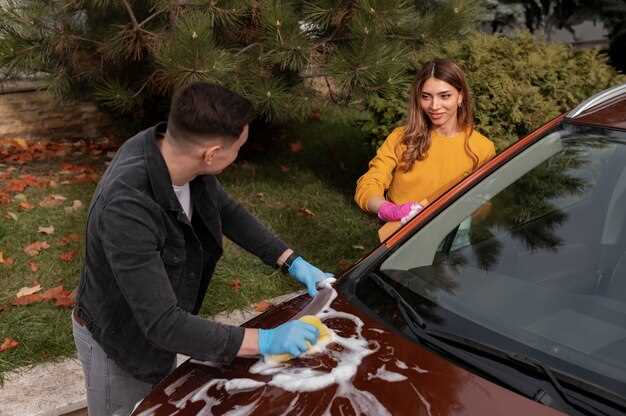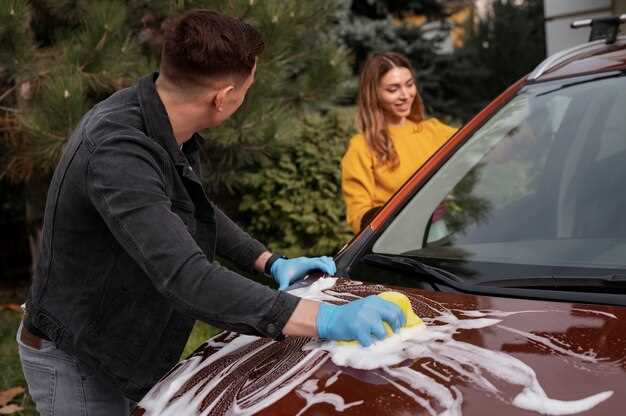
Auto glass is a crucial component of any vehicle, providing safety, visibility, and structural integrity. Proper maintenance and cleaning of your car’s windows and mirrors are essential for both aesthetics and safety on the road. Neglecting this aspect can lead to reduced visibility, increased glare, and even potential accidents. In this guide, we will explore effective techniques and best practices for keeping your auto glass in pristine condition.
Understanding the materials used in auto glass is vital for selecting the right cleaning products. Most vehicles feature laminated windshields and tempered side and rear windows, each requiring specific care to avoid damage. Using the appropriate cleaners and tools will not only ensure a streak-free finish but also extend the lifespan of your glass surfaces.
In addition to cleaning techniques, regular maintenance plays a significant role in preventing issues like scratches and chips. Routine checks for cracks and chips can save you from more expensive repairs in the future. This guide will provide insights into quick fixes for minor damage, as well as tips on when to consult a professional for more serious issues.
By following the guidelines outlined in this article, you’ll not only enhance your driving experience with clear and spotless glass but also contribute to the overall safety of yourself and others on the road. Let’s dive into the specifics of cleaning and maintaining your auto glass effectively.
Choosing the Right Cleaning Products for Auto Glass
Selecting the appropriate cleaning products for auto glass is essential to achieve a spotless finish while ensuring the longevity of the glass surface. Start by looking for ammonia-free cleaners, as ammonia can damage tinting and lead to discoloration over time. Opt for products specifically formulated for automotive glass, as they are designed to remove dirt, grime, and other contaminants effectively.
Consider using Microfiber cloths when applying cleaners. These cloths are soft and non-abrasive, preventing scratches while lifting dirt and oils from the glass surface. Avoid using paper towels, as they can leave lint and streaks behind. Always apply the cleaner to the cloth first rather than directly onto the glass to control the amount of product used and prevent overspray.
For stubborn stains or residue, consider specialized products that target specific issues such as water spots or sap. Ensure the cleaner is safe for both interior and exterior surfaces if you plan to use it for all glass areas of the vehicle. Additionally, always read labels carefully to verify that the product is safe for use on automotive surfaces.
Natural alternatives, such as a mixture of vinegar and water, can also be effective and safer for the environment. However, these mixtures may not provide the same level of cleaning power as commercial products for heavy-duty jobs. Always perform a spot test when trying a new cleaner to ensure compatibility with your vehicle’s glass.
Finally, keep in mind the importance of following the manufacturer’s recommendations for cleaning auto glass. Some vehicles may have specific guidelines or restrictions regarding glass maintenance, which should be adhered to for optimal results.
Step-by-Step Process for Streak-Free Auto Glass Cleaning

Maintaining crystal-clear auto glass is essential for safety and visibility while driving. Follow this detailed process to achieve streak-free results.
1. Gather Your Supplies
Before starting, collect the necessary materials: a clean microfiber cloth, a glass cleaner specifically formulated for automotive use, and a bucket of clean water. Avoid ammonia-based cleaners as they can damage window tint and rubber seals.
2. Choose the Right Environment
Pick a shaded area or a cool day for cleaning. Direct sunlight can cause the cleaner to dry too quickly, leading to streaking. Ensure the glass surface is cool to the touch before proceeding.
3. Pre-Wash the Glass
Before applying the cleaner, pre-wash the glass with a damp microfiber cloth. This step removes any loose dirt, dust, or debris, which can scratch the surface during cleaning.
4. Apply the Glass Cleaner
Spray an even coat of the glass cleaner on one section of the auto glass. Start with the top of the window and work your way down to prevent drips from settling on already cleaned areas. Avoid over-saturating the surface.
5. Wipe with a Microfiber Cloth
Using a clean microfiber cloth, begin wiping in a circular motion. This technique helps lift dirt and grime while evenly distributing the cleaner. Switch to vertical and horizontal motions to ensure full coverage and to eliminate any streaks.
6. Inspect for Streaks
After the initial cleaning, take a moment to inspect the glass for any remaining streaks or spots. If necessary, repeat the cleaning process on those areas using a clean section of the cloth.
7. Clean Window Edges
Don’t forget the edges and corners of the glass, as these areas can collect grime. Use the cloth to wipe around the edges using a gentle touch to avoid damaging the seals.
8. Finish with a Dry Cloth
Once the glass is clean, use a dry microfiber cloth to buff the surface. This final step ensures any excess cleaner is removed, leaving a flawless, streak-free shine.
9. Regular Maintenance
For best results, establish a routine cleaning schedule. Regular maintenance prevents the buildup of residue and keeps auto glass looking pristine.
Preventative Maintenance Tips for Prolonging Auto Glass Life

To extend the lifespan of your auto glass and maintain optimal visibility, consider incorporating these preventative maintenance tips into your routine.
First, regularly clean your auto glass using a high-quality glass cleaner and a microfiber cloth. Avoid using ammonia-based products, as they can degrade sealants over time. Clean your glass weekly to prevent the buildup of dirt and grime that can lead to scratches.
Secondly, inspect your windshield wipers regularly. Replace them if they show signs of wear, such as streaking or skipping. Functional wipers are crucial for maintaining clear visibility during inclement weather, reducing the risk of accidents and damage to the glass.
Additionally, avoid using your windshield as a support for objects on the dashboard. Heavy items can apply pressure, leading to potential cracks or chips in the glass. Secure all items before driving to eliminate this risk.
Furthermore, park your vehicle in shaded areas or use a sunshade when parked for extended periods. Harsh sunlight can cause the glass to expand and contract, increasing the likelihood of stress fractures over time. Keeping your car in a garage or using a protective cover is also beneficial.
Another important aspect is promptly addressing any chips or cracks. If you notice any damage, have it repaired immediately to prevent it from spreading. Many auto repair shops specialize in quick repairs that can save you from needing a full replacement.
Lastly, regularly examine the seals and moldings around your auto glass. Damaged seals can allow water and debris to enter, compromising the integrity of the glass and the vehicle’s interior. Replace any worn or damaged weather stripping to ensure a tight seal.

